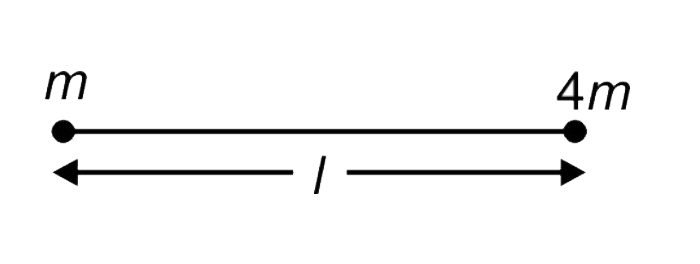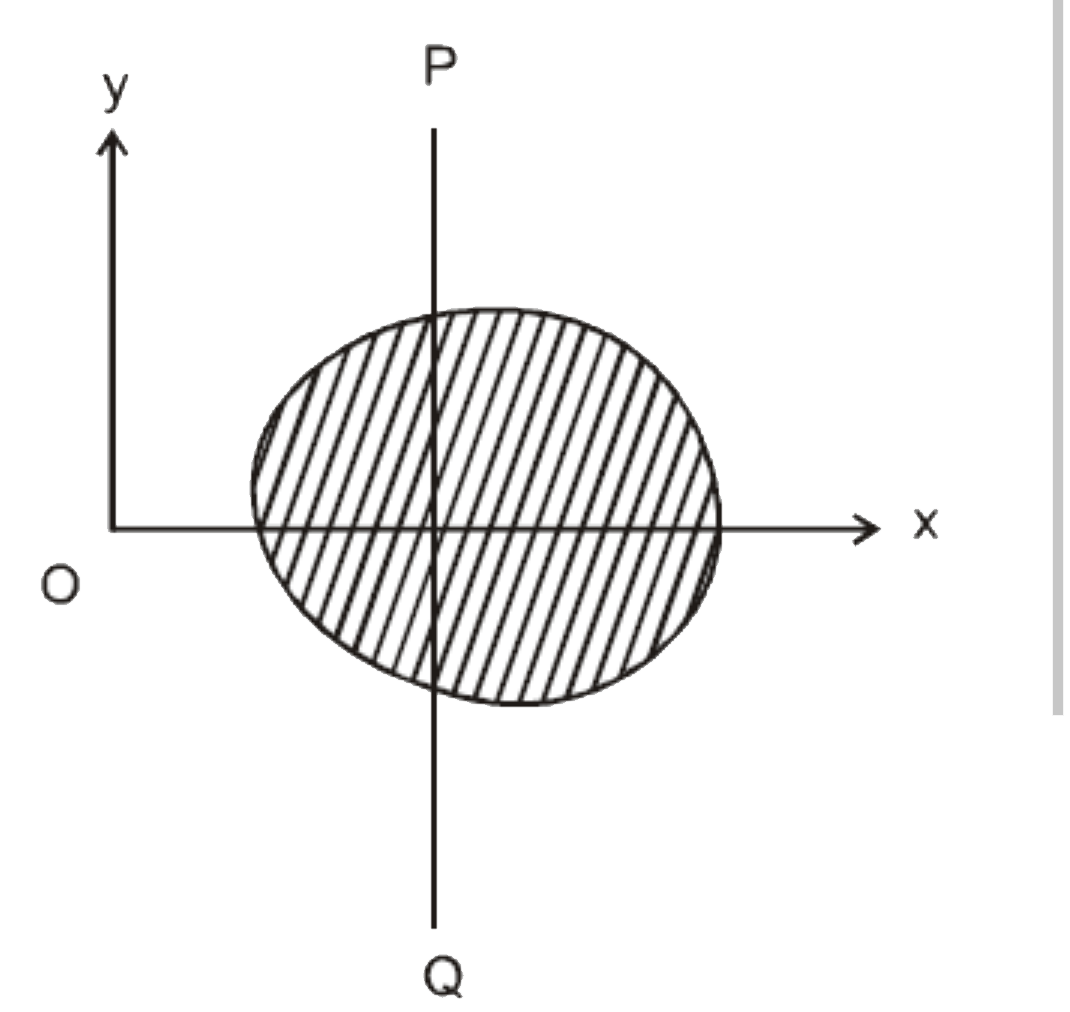Complete Solutions to PHYSICS of chapter NTA JEE MOCK TEST 76 of Class 12 book with complete answers and questions
| Class 12 | PHYSICS |
| Chapter | NTA JEE MOCK TEST 76 |
| NTA MOCK TEST | PHYSICS |
| Number Of Questions | 25 |
| Academic Year | 2023-24 |
A Bohr's hydrogen atom undergoes a transition `n = 5 to n = 4` and emits a photon of frequency `f`. Frequency of circular motion of electron in `n = 4 orbit is f_(4)`. The ratio `f//f_(4)` is found to be `18//5 m`. State the value of `m`.
View SolutionThe figure shown below, calculate the net current from the battery and net resistance of the circuit.

View SolutionA very long solenoid is made out of a wire with n turns per units length. The radius of the cylinder is a and is negligible compared to its length l. The interior of the cylinder is filled with materials such that the linear magnetic permeability varies with the distance r from axis according to `mu(r)={{:(mu_(1)="constant , for "0ltrlt b),(mu_(2)="constant , for "b lt r lt a):}}`
The self - inductance of the solenoid is
View SolutionThe moment of inertia of a circular ring of mass 1 kg about an axis passing through its centre and perpendicular to its plane is `"4 kg m"^(2)`. The diameter of the ring is
View SolutionA rifle with a muzzle velocity of `100m//s` shoots a bullet at small target `30m` away in the same horizontal line. How high above the target must the gun be aimed so that the bullet will hit the target. (Hint: use small angle approximation.)
View SolutionTwo particles having masses m and 4m are separated by distance l. The distance of the centre of mass from m is `x_(1) and x_(2)` is the distance of point at which gravitational field intensity is zero. Find the value of `(x_(1))/(x_(2))`

View SolutionTwo bodies of masses 1 kg and 4 kg are connected to a vertical spring, as shown in the figure. The smaller mass executes simple harmonic motion of angular frequency `"25 rad s"^(-1)`, and amplitude 1.6 cm while the bigger mass remains stationary on the ground. The maximum force exerted by the system on the floor is `("take "g=10ms^(-2))`.

View SolutionOne mole of gas having `gamma = 7//5` is mixed with 1 mole of a gas having `gamma = 4//3`. What will be `gamma` for the mixture ?
View SolutionTwo identical glass bulbs are interconnected by a thin glass tube. A gas is filled in these bulbs at `N.T.P.` If one bulb is placed in ice and another bulb is placed in hot bath, then the pressure of the gas becomes `1.5` times. The temperature of hot bath will be

View SolutionWater is being poured in a vessel at a constant rate `alpha m^(2)//s`. There is a small hole of area a at the bottom of the tank. The maximum level of water in the vessel is proportional to
View SolutionA star initially has `10^(40) ` deuterons. It produces energy via the process `_(1)H^(2) + _(1)H^(2) + rarr _(1) H^(3) + p. `and `_(1)H^(2) + _(1)H^(3) + rarr _(2) He^(4) + n` .If the average power radiated by the state is `10^(16) W` , the deuteron supply of the star is exhausted in a time of the order of .
The masses of the nuclei are as follows:
`M(H^(2)) = 2.014 amu,`
`M(p) = 1.007 amu, M(n) = 1.008 amu, M(He^(4)) = 4.001 amu`.
View SolutionThe mass M shown in figure ocillates in simple harmonic motion with amplitude A.
The amplitude of the point P is

View SolutionThe photosensitive surface is receiving the light of wavelength `5000Å` at the rate of `10^(-8)"J s"^(-1)`. The number of photons received per second is `(h=6.62xx10^(-34)Js, c=3xx10^(8)ms^(-1))`
View SolutionA cone of radius `R` and height `H`, is hanging inside a liquid of density `rho` by means of a string as shown in figure. The force due to the liquid acting on the slant surface of the cone is

View SolutionLine PQ is parallel to y - axis and moment of inertia of a rigid body about PQ line is given by `I=2x^(2)-12x+27,` where x is in meter and I is in `"kg m"^(3)`. The minimum value of I is :

View SolutionIn the following circuits, PN - junction diodes `D_(1),D_(2) and D_(3)` are ideal for the following potential of A and B, the correct increasing order of resistance between A and B will be

(i) `-10V, -5V`
(ii) `-5V, -10V`
(iii) `-4V, -12V`
View SolutionThe viscosity `eta` of a gas depends on the long - range attractive part of the intermolecular force, which varies with molecular separation r according to `F=mur^(-n)` where n is a number and `mu` is a constant. If `eta` is a function of the mass m of the molecules, their mean speed v, and the constant `mu` than which of the following is correct-
View Solutionplane waves refracted for air to water using Huygen.s principal `a,b,c,d,e` ae length on the diagram.The refractive index of water wrt air is the ratio.

View Solution2 loudspeakers are emitting sound waves of wavelength lambda with an initial phase difference of `pi/2` at what minimum distance from O on line AB will one hear a maximum

View SolutionA block of mass m is connected rigidly with a smooth wedge (plank) by a light spring of stiffness k. If the wedge is moved with constant velocity `v_0`, find the work done by the external agent till the maximum compression of the spring.

View SolutionShown in the figure is a block at rest haivng an inclined smooth groove in a vertical plane. The horizontal surface is smooth. A ball of the mass as that of the block at rest is released from the top end. The time when the ball will leave groove is `sqrt((nL)/(2sqrt3g))`. Find n.

View SolutionA particle is suspended by a light vertical inelastic string of length 1 from a fixed support. At its equilbrium position it is projected horizontally with a speed `sqrt(6 g l)`. Find the ratio of the tension in the string in its horizontal position to that in the string when the particle is vertically above the point of support.
View SolutionA `1kg` block `B` rests as shown on a bracket `A` of same mass. Constant forces `F_(1)=20N` and `F_(2)=8N` start to act at time `t=0` when the distance of block `B` from pulley is `50cm`. Time when block `B` reaches the pulley is `……………………` .`(` Assume that friction is absent every where. Pulley and string are light.

View SolutionWhen the gap between two identical concave thin lenses `(mu=(3)/(2), f=10cm)` placed in contact is filled with certain liquid, the image of an object placed at 15 cm from lens combination shifts away from the lens by `5//4` cm. If the refractive index of liquid is `mu`, then write `3mu` as your answer.
View SolutionA block of mass 0.1 kg is attached to a cord passing through a hole in a horizontal frictionless horizontal surface as shown in the figure. The block is originally revolving at a distance of 0.4 m from the hole, with an angular velocity of `"2 rad s"^(-1)`. The cord is then pulled from below, shortening the radius of the circle in which the block revolves to 0.2 m. Considering the block to be point mass, calculate the new angular velocity `("in rad s"^(-1))`

View Solution
PHYSICS questions and complete solutions for chapter NTA JEE MOCK TEST 76 of NTA MOCK TESTS of Class 12